Flags…before and after Pearl Harbor
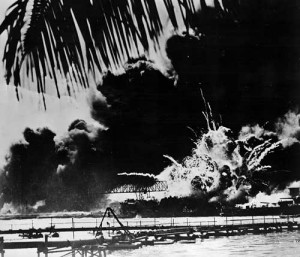
Seventy-five years ago, on December 7, 1941, Imperial Japan’s air force attacked Pearl Harbor in Hawaii, triggering the entry of the United States into World War II. The early morning attack occurred on a Sunday, as most Americans, unaware of what was happening several time zones away, opened their morning newspapers, where they read articles about American flags.
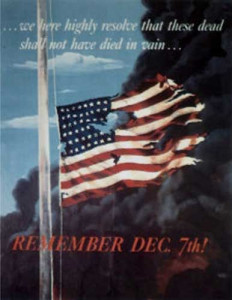
For example, The Battle Creek Enquirer in Michigan re-told what happened during an Armistice Day parade after World War I. A color-bearer “hastily handed the flag to a marching comrade,” the article said. The man “feebly whispered, ‘Take it!’ and fell dead of a heart attack.” The article commented, “Isn’t that what the past is constantly saying…to the present with respect to the flag? ‘Take it’?”
The St. Louis Dispatch, in its December 7 edition, presented readers with a list of books with a “patriotic angle” that they could give as Christmas gifts. “Red-white-and-blue book bindings stand out like flags in the stacks of books for children this Christmas season,” wrote the reviewer. Among her recommendations was “Broad Stripes and Bright Stars,” which “tells how the 13 original colonies became the United States.”
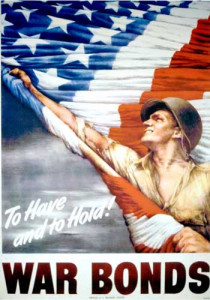 In Texas on the fateful day, The Waxahachie Daily Light reported on the annual Santa Claus parade, which “ushered in the 1941 Yuletide season.” Thousands of people turned out to watch a parade that extended four blocks. Every child at the event “was given an American flag,” the journal noted, along with a sack of candy.
In Texas on the fateful day, The Waxahachie Daily Light reported on the annual Santa Claus parade, which “ushered in the 1941 Yuletide season.” Thousands of people turned out to watch a parade that extended four blocks. Every child at the event “was given an American flag,” the journal noted, along with a sack of candy.
A poem titled “Our Flag” appeared in the December 7 issue of The Times Herald in Port Huron, Michigan. Readers who would soon learn about the Pacific attack read these lines: “Our flag is still a-flying/o’er the land and o’er the sea./Our soldiers are a-flying/to save her from any enemy./Our Flag is still a-flying/a pleasant sight to see.”
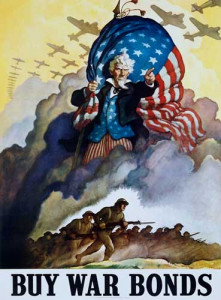
The next day, December 8, journals across the U.S. were filled with articles about death, destruction, treachery – and star-spangled banners. The Springfield Republican in Massachusetts, for example, printed an editorial titled “United We Stand.” In it, an unnamed author wrote about how “the American people at last are united. They will support to the limit of their strength their government in challenging Japan’s unjustified aggression in the Pacific.”
Continuing his commentary, the writer referenced Old Glory when he said that “the utterly brazen and reckless attack on the American flag by Japanese bombers was typical of the militarist theory of the initiative in staging a surprise offensive.” Such “an insult to the American” flag would lead to a world war, he said.
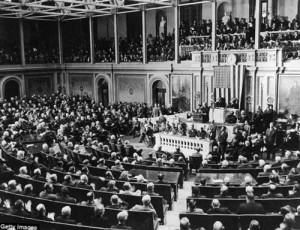
That same day, President Franklin D. Roosevelt, standing before a huge American flag, addressed Congress to ask for a declaration of war against Japan and its ally, Germany. In reply, from coast to coast, Americans lifted their flags into the air as a promise of the victory to come.
